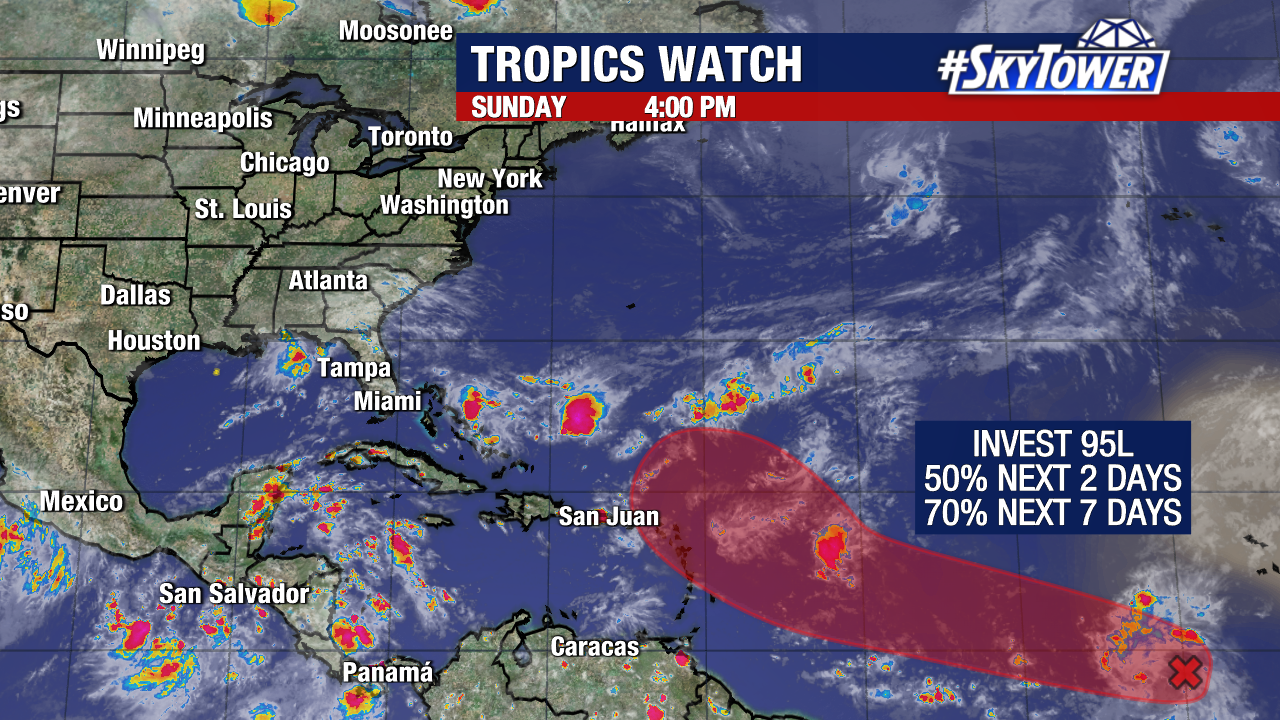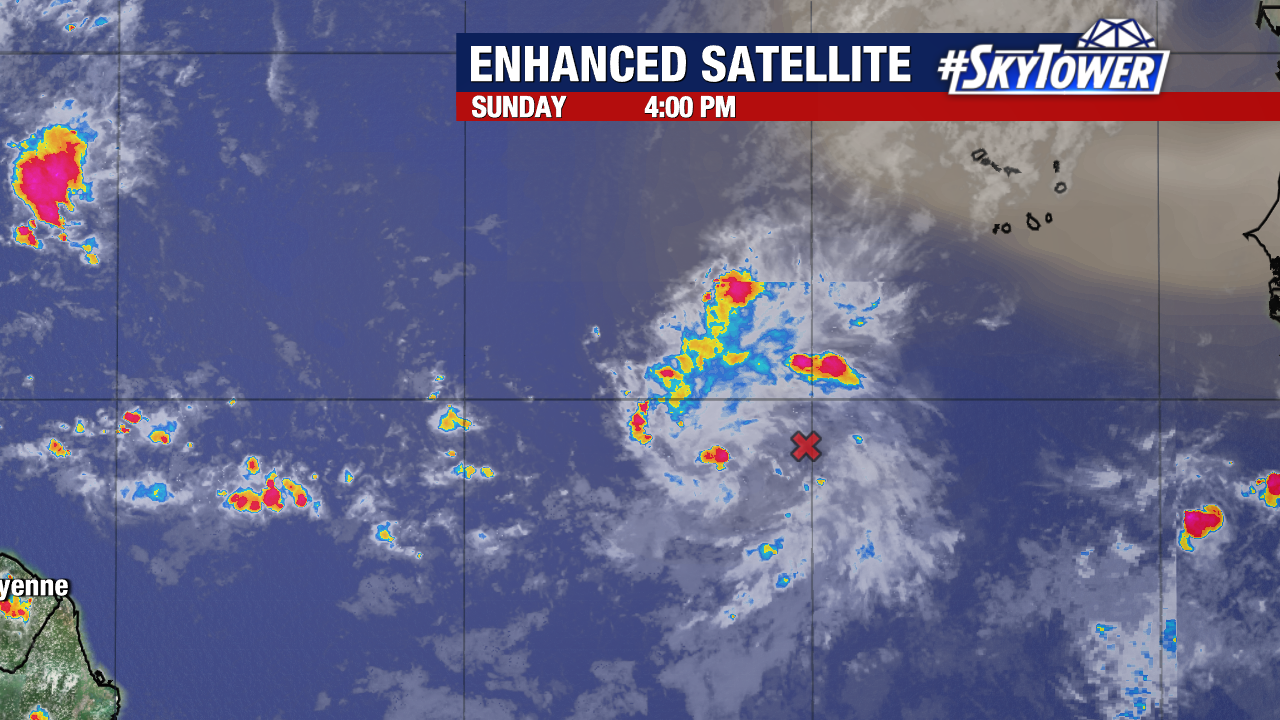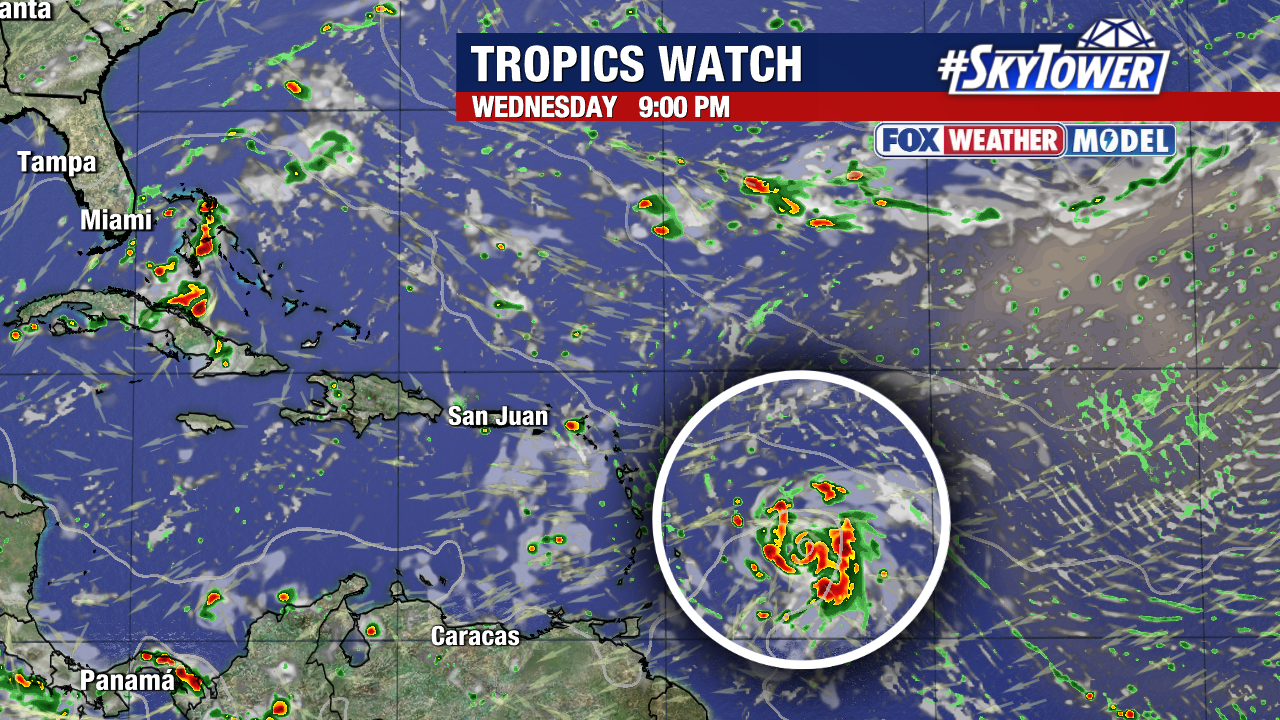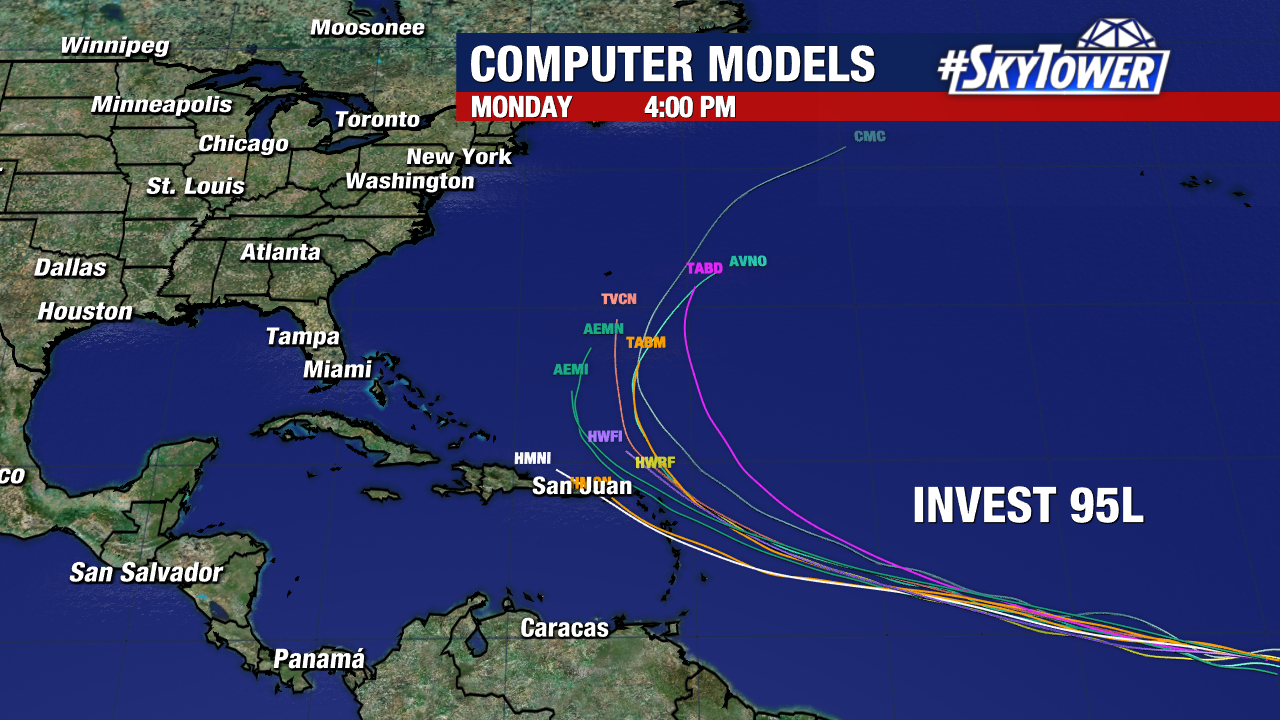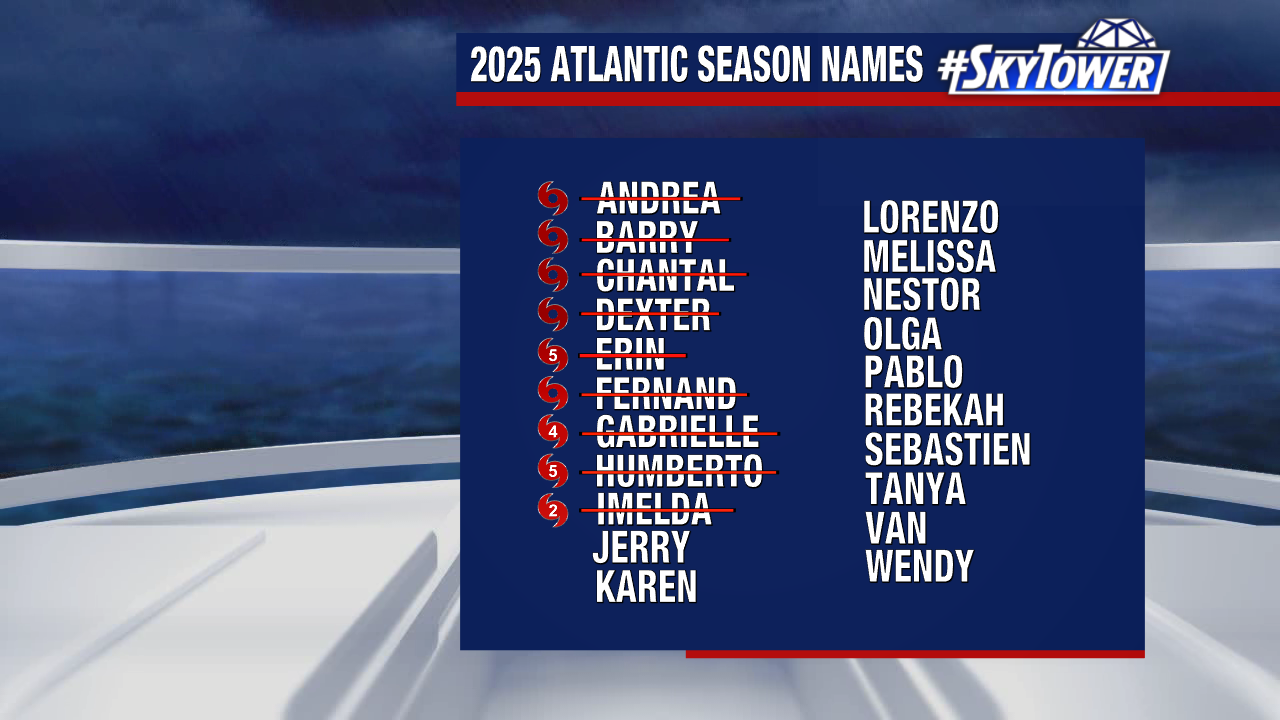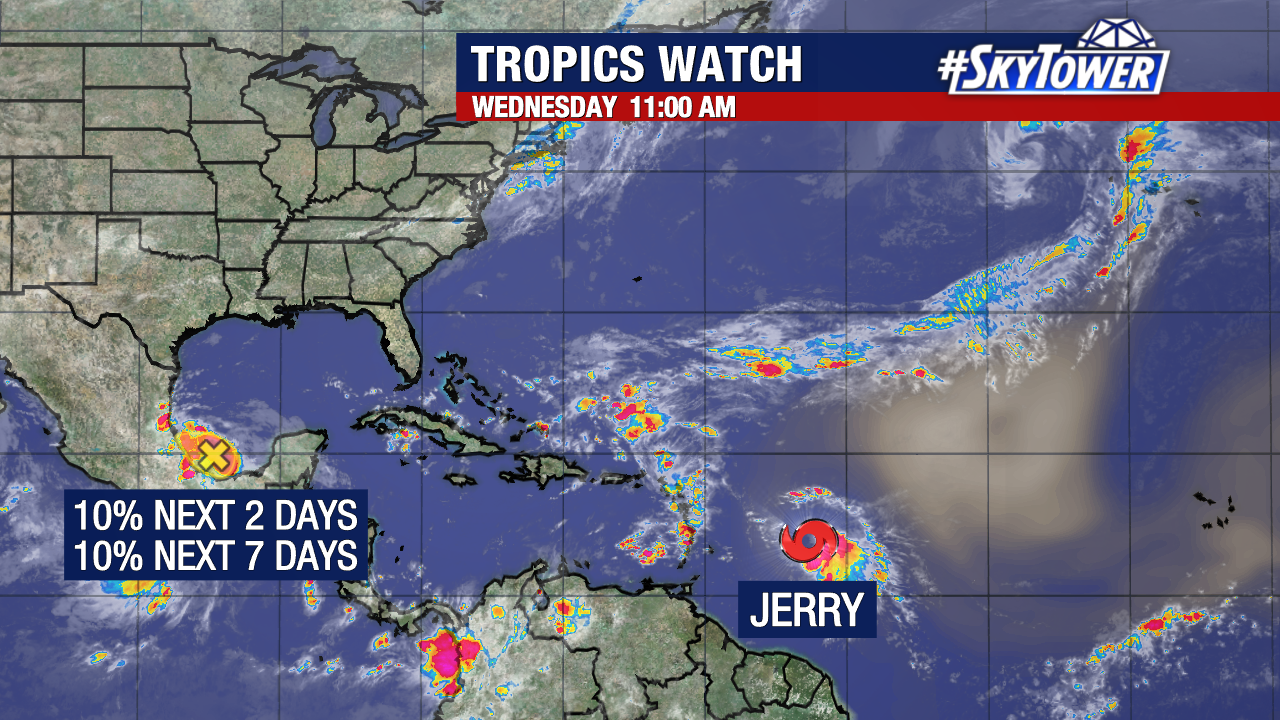
We’re currently monitoring Tropical Storm Jerry in the Atlantic and one disturbance in the Bay of Campeche.
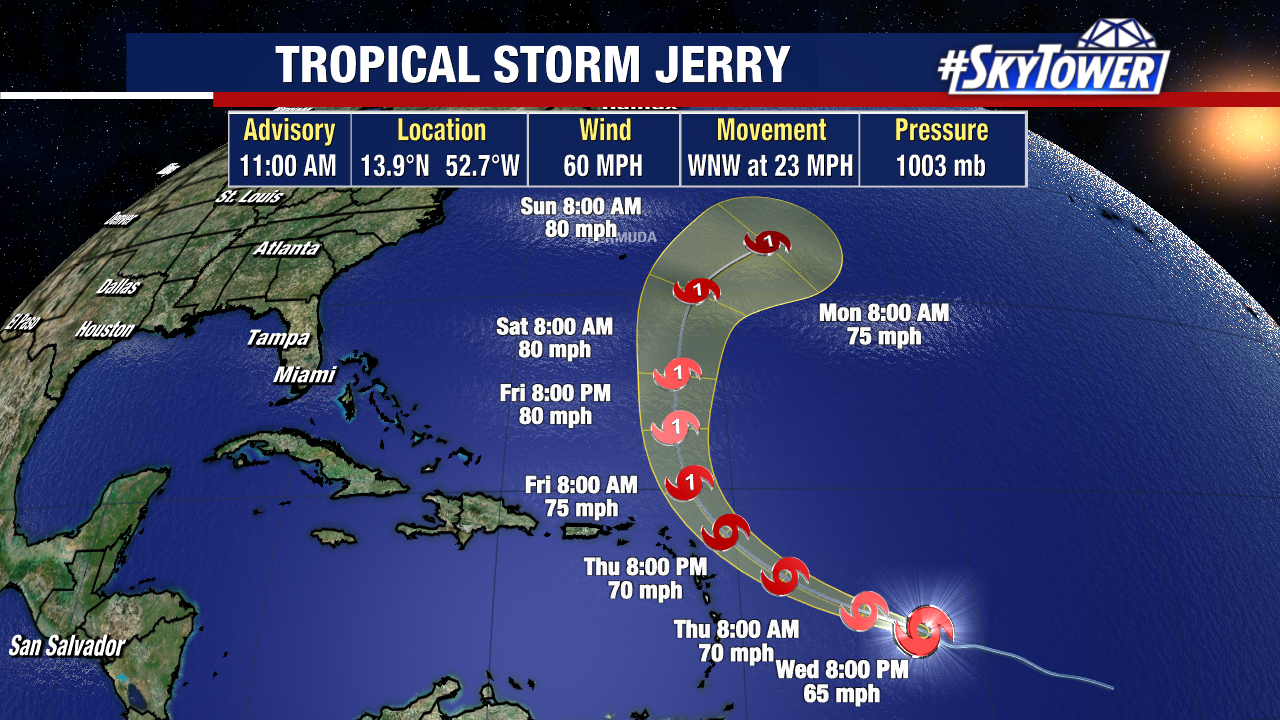
Jerry continues to strengthen and is expected to pass near the Leeward Islands tomorrow. Forecast guidance suggests it reaches hurricane strength before the weekend, which would make it the fifth hurricane of the 2025 season.

The overwhelming majority of weather models remain consistent in turning Jerry northward and away from the United States, though Bermuda may need to watch for potential impacts this weekend.
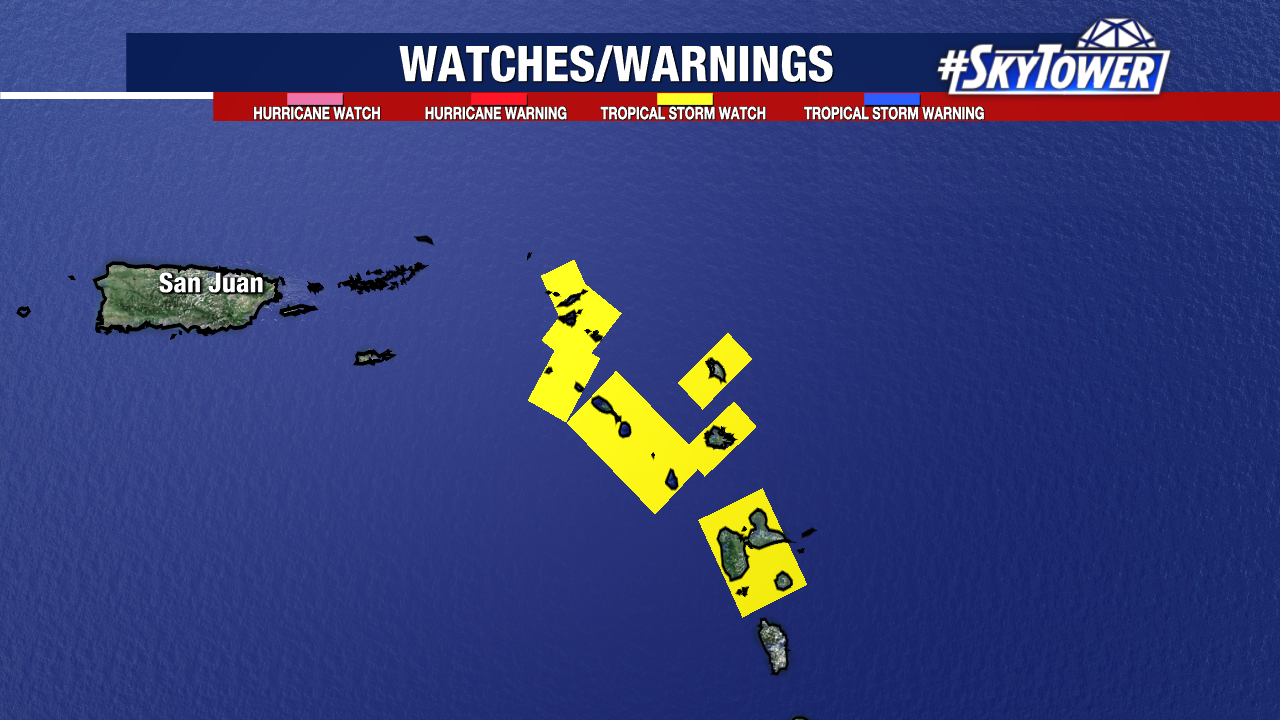
Tropical Storm Watches remain in effect for Antigua, Barbuda, Anguilla, St. Kitts & Nevis, Montserrat, St. Barthelemy, St. Martin, Sint Maarten, Saba, St. Eustatius, and Guadeloupe.

Meanwhile, a trough of low pressure in the Bay of Campeche carries only a 10 percent chance of developing before moving inland over Mexico within the next day or so. Regardless of development, it will bring locally heavy rain to the region. If a tropical storm forms, it would take the name “Karen”.

